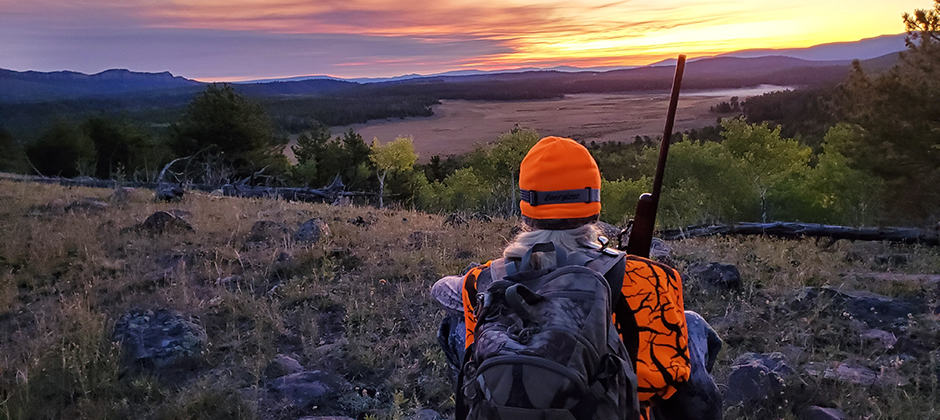Share this article
JWM: When hunters arrive, elk seek safer territory
Hunters in the American West know they’re not the only ones paying attention to the start of hunting season. When hunters take to the forest, elk are known to seek out private lands where hunting often isn’t allowed.
“It’s uncanny,” said TWS member Max Sergeyev, a PhD candidate at Texas A&M’s Caesar Kleberg Wildlife Research Institute. “As soon as the hunt opens, they all move en masse onto private lands. When it’s over, they move onto public lands again.”
For ranchers and other private landowners, having elk (Cervus canadensis) roaming their lands can create conflicts. It can also create problems for wildlife managers, who use hunting as a way to manage populations. If hunters can’t access the elk, they won’t have much effect on their numbers.
But when the Utah Division of Wildlife Resources allowed elk hunting on private land, it didn’t just give hunters a new way to harvest elk. It shifted many of the elk back to public lands again.
“I think all animals—especially prey animals—are pretty in tune with risk of death by hunters,” Sergeyev said. “It seems like they’re definitely cued in on where it’s risky and where it’s not.”
As a master’s student at Brigham Young University, Sergeyev led a study published in the Journal of Wildlife Management looking at elk movement across some 43,000 square kilometers along the Wasatch Front in central Utah, west of Salt Lake City. Between January 2015 and March 2017, his team captured 445 elk and fitted them with GPS collars. The massive effort resulted in a number of studies that drilled down on elk behavior, from their migration routes to their survival rates.
“This was a huge study,” Sergeyev said.
They were also able to look at what hunters always suspected—elk movement onto private land during hunting season. The team found that at the beginning of archery season and during rifle season, elk did indeed shift to private lands. Before hunting season, elk were seen on public lands up to 64% of the time. During rifle season, that fell to 29%. Once hunting season ended, elk use of public land went back up to about 45%.
“They’re so acutely aware of this risk on the landscape,” Sergeyev said, “and they’re able to navigate it effectively.”
In 2016, however, when Utah allowed elk hunting on private land, that changed the scenario. Elk seemed to stop seeing private lands as a refuge as much as they used to. From 2015 to 2016, elk use of public land rose from 29% to 41%.
That can help hunters on public lands access elk, Sergeyev said, and it can help managers better use hunting to manage elk numbers.
“It provides a pretty elegant solution to this problem,” Sergeyev said.
This article features research that was published in a TWS peer-reviewed journal. Individual online access to all TWS journal articles is a benefit of membership. Join TWS now to read the latest in wildlife research.
Header Image: Researchers in Utah found that elk leave public lands during hunting season, but hunting on private land pushes them back. Credit: Becky Wright








